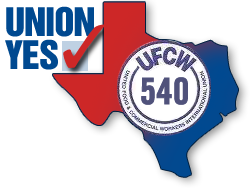Organizing 101 • Forming a Union • Employer Tactics • Scare Tactics
Phase 1: Forming a Union
There are two ways that workers can come together to form a union in their workplace.
The easiest and usually quickest way to gain union representation is through a “card check agreement.” This is where the employer agrees not to interfere with workers’ choice to join a union. Once a majority of the employees fill out and sign authorization cards, they gain union representation.
If the employer doesn’t agree to a card check and a majority of workers have signed authorization cards, then workers must hold a union election. Filling out an authorization card at this point does not make you a member of the union, or require you to pay any dues, it just shows that you would like to have an election so you and your co-workers can decide whether or not to form a union.
Phase 2: Election
If your employer refuses a card check agreement, the union will send a petition to the National Labor Relations Board (NLRB) to conduct an election. You shouldn’t have to wait longer than 5 to 8 weeks once the NLRB has been contacted.
Since it is a secret ballot election, your boss will not know how you voted – just how many employees voted for union representation.
Phase 3: Negotiations
The next phase begins when you elect a group of your fellow workers to a negotiating committee.
The purpose of the negotiating committee is to assist professional union negotiators in getting a fair deal while negotiating your contract. The negotiating committee will survey the wants and needs of you and your co-workers to find out what the major concerns are and how best they could be solved through the contract.
Collective bargaining takes place between two groups – one composed of the negotiating committee and your union representative, and the other composed of representatives from management.
Usually after each collective bargaining session, the contract is returned to you and your fellow workers for discussion. Once the negotiating committee agrees that they have a good contract, they will bring it to their fellow co-workers for a final decision. Should the workers reject the contract, it will go back to the bargaining table for further negotiations until a contract is agreed upon. However, if a majority of employees approves the contract, the contract then goes into effect.
Phase 4: Membership
If you are in one of the states listed below you won’t automatically enjoy the benefits of being a union member after a contract has been agreed on. Instead contact one of your union representatives to sign up.
‘Right-to-Work’ States
Alabama, Arizona, Florida, Georgia, Idaho, Iowa, Kansas, Louisiana, Mississippi, Nebraska, Nevada, North Carolina, North Dakota, Oklahoma, South Carolina, South Dakota, Tennessee, Texas, Utah, Virginia, Wyoming

